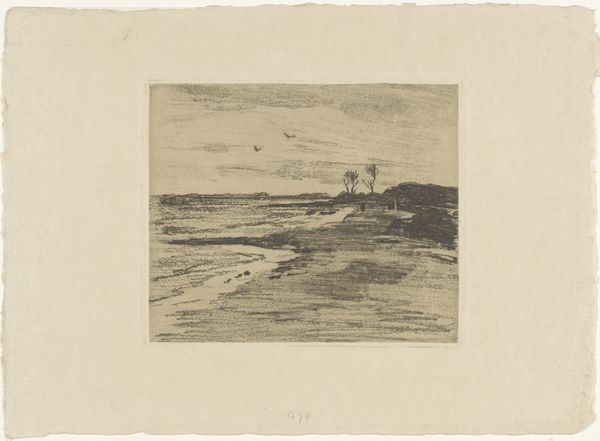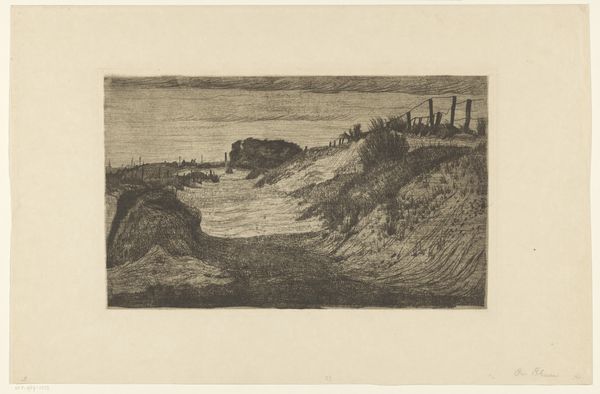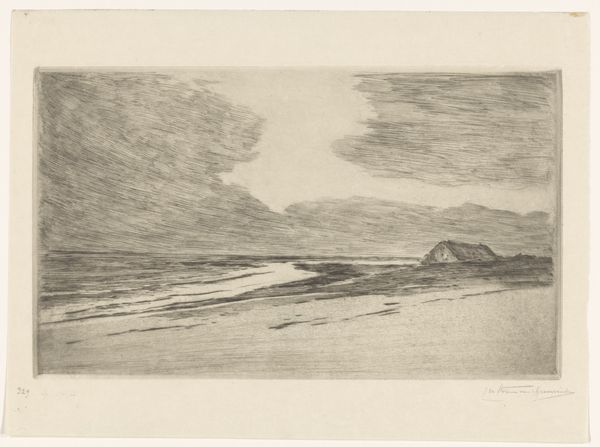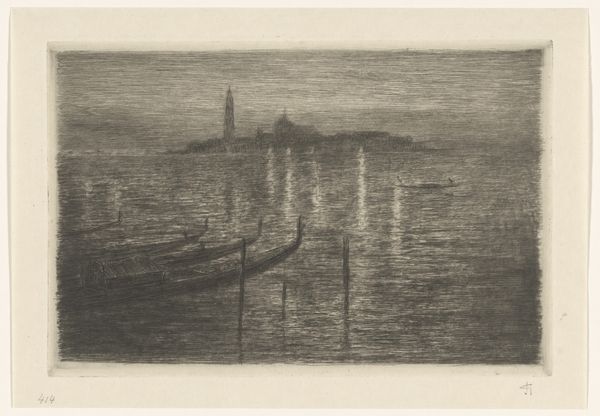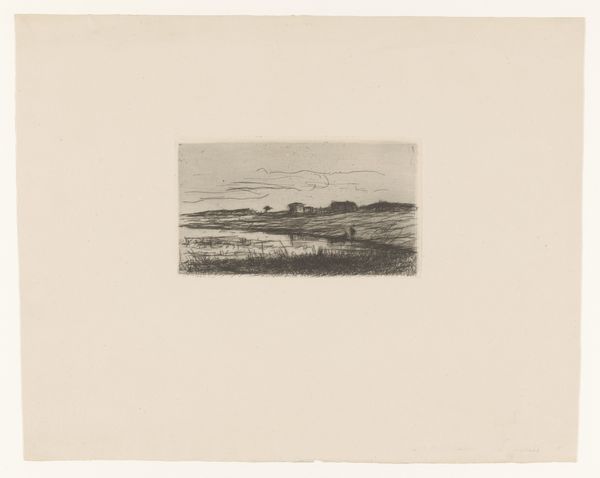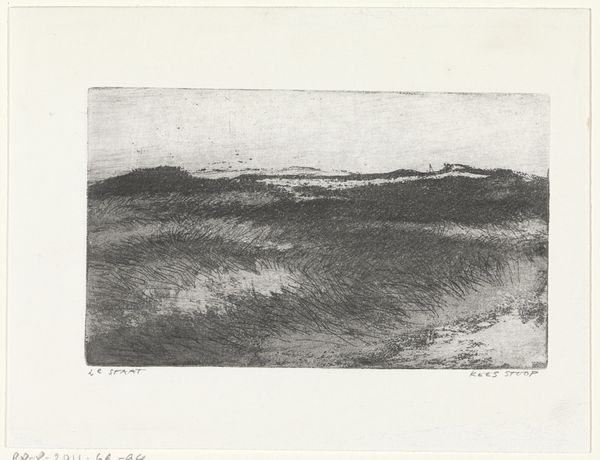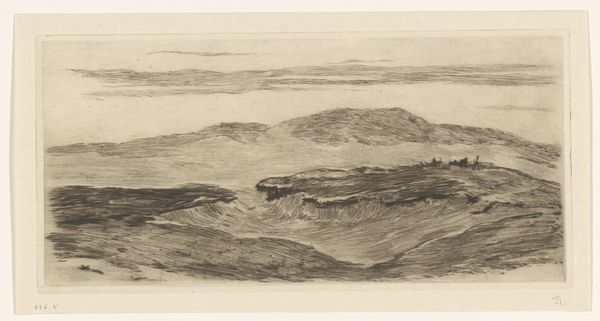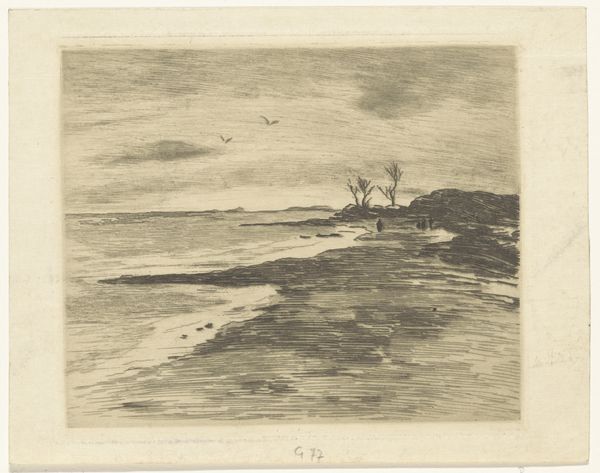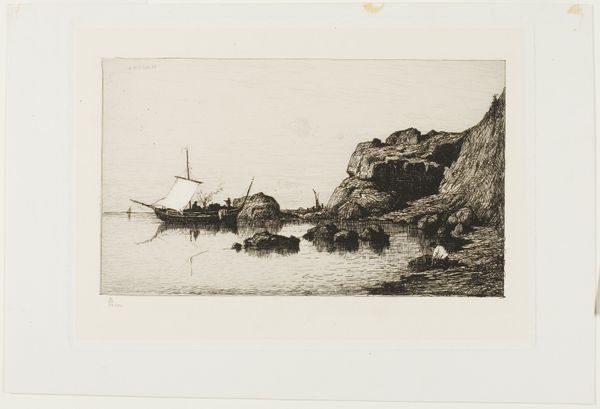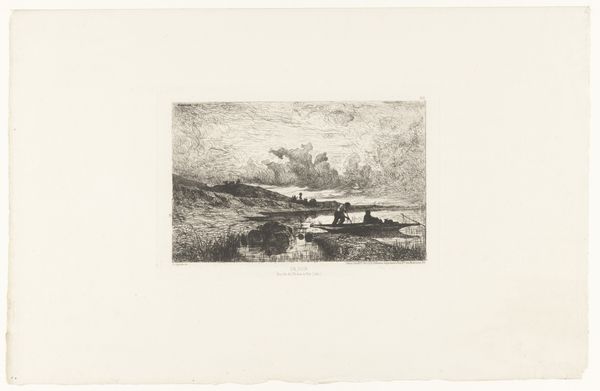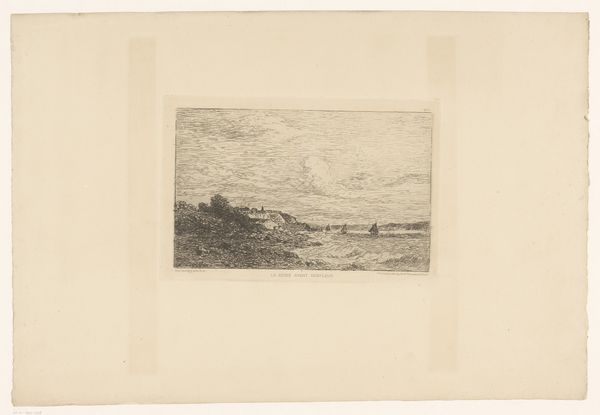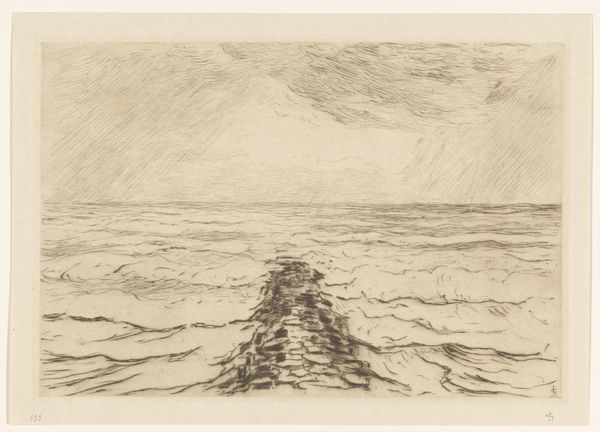
print, etching
#
dutch-golden-age
# print
#
etching
#
landscape
#
geometric
#
line
#
cityscape
#
realism
Dimensions: height 170 mm, width 241 mm
Copyright: Rijks Museum: Open Domain
Curator: This is Carel Nicolaas Storm van 's-Gravesande's "Gezicht op een scheepswerf," dating sometime between 1851 and 1924. It's an etching, a print, here in the Rijksmuseum's collection. What's your first reaction to it? Editor: Stark, definitely stark. It’s an almost aggressively unromantic rendering. So much dark foreground contrasting the faint light in the distance. Almost bleak. Curator: It does possess a certain melancholic air, doesn't it? When situated within the socio-economic history of shipbuilding, the imagery transforms. The docks, the silhouette of the vessel—they begin to represent a complex matrix of labor, industry, and capitalistic expansion. This vista normalizes extraction under the guise of scenic aesthetic, reflecting power dynamics as well. Editor: Precisely! And how might we deconstruct this "scenic aesthetic" in light of the Netherlands' colonial past? Are we looking at the quiet engine of empire? Or does the image reflect the burgeoning Dutch trading power of the day, a statement of national and economic strength? Curator: Perhaps both. The technical skill inherent in etching itself mirrors the meticulous, regimented processes of the shipyards. There's a dialogue between the medium, the message, and the sociopolitical reality of the era. The visual language invites us to critically examine the relationship between art, industry, and empire. Editor: That brings forth a tension. Storm van 's-Gravesande presents a seemingly objective snapshot of the shipyards, yet his perspective inevitably intersects with broader cultural narratives. The composition, starkly divided, offers little space for nuanced accounts from marginalized individuals impacted by these very industries. It's ripe for an intersectional critique. Curator: A reminder that representations, especially within art, are never neutral. "Gezicht op een scheepswerf" prompts us to dissect the layered meanings embedded within seemingly straightforward depictions of landscape and labor. Editor: Indeed, prompting us to ask: whose narrative truly holds the most significance here, given the legacy that this vista implies. Curator: Absolutely. A challenging piece, ripe with the opportunity for reflection.
Comments
No comments
Be the first to comment and join the conversation on the ultimate creative platform.
